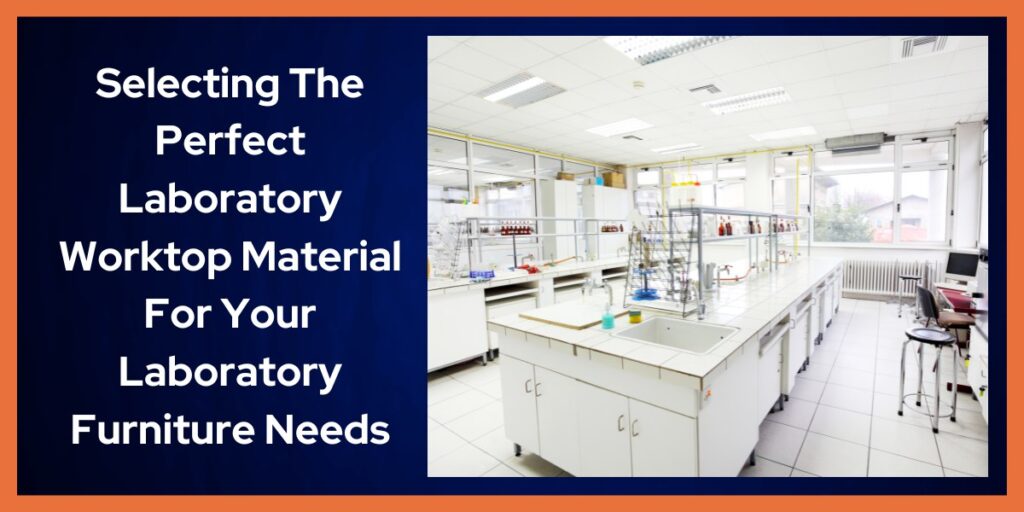Laboratory worktops are the unacknowledged assets of equipped laboratory furniture for scientific settings, offering solid and long-lasting platforms for a broad spectrum of projects. The material used for the surface has an essential relation with human engagement, flexibility of use, ergonomic Factors to consider, productivity, and safety, eventually determining the quality of the end product. In the following sections, we\’ll analyze the most essential attributes of laboratory worktops, ranging from stainless steel, epoxy resin, phenolic resin, plastic laminate, ceramics, natural stones, and wood, to help you make a well-rounded selection based on your personalized laboratory needs.
Acknowledging the utility of Laboratory Worktops
Laboratory worktops are flat surfaces that have been meticulously designed to meet the rigorous demands of scientific work. They provide the foundation for a wide range of activities, from basic laboratory tasks to complex experiments. Ergonomic design ensures user comfort and productivity, while the durability of the material contributes to the safety and quality of the laboratory environment. The choice of suitable worktop materials is crucial for the whole performance of laboratory space, regardless of whether it\’s a refurbishment, manufacturing, or installation project.
Material Characteristics: Resilience to the Rigors of Lab Work
The most prominent marks of lab furniture including laboratory worktops must be resilient to various factors, including heat, chemicals, physical damage, scratches and wear, and bacterial contamination. Different materials provide different degrees of resistance and hence, depending on the laboratory\’s requirements, it will be necessary to choose an appropriate material.
Here are some of the common materials that we use:-
Stainless Steel:
Features:
Corrosion Resistance: ideal for laboratories that deal with corrosive substances.
Durability: Withstands heavy use and it\’s easy to clean.
Heat Resistance: Tolerates high temperatures.
Factors to consider:
Cost: Are relatively high compared to some of the alternatives.
Scratching: Prone to scratches with use and time.
Epoxy Resin:
features:
Chemical Resistance: Withstands harsh chemical environments.
Durability: Resistant to scratching and customizable.
Heat Resistance: Provides heat resistance.
Factors to consider:
Cost: Might be more expensive.
Prolonged Heat Exposure: This may affect the surface.
Phenolic Resin:
Features:
Affordability: A budgetarily acceptable solution.
Chemical resistance: Appropriate for a wide range of laboratory applications.
Installation: It is easy to install.
Performance: Decent for much of the lab work.
Factors to consider:
Durability: may not be as durable as stainless steel or epoxy resin.
Customization: There are limited options to customize.
Plastic Laminate:
Feature:
Cost-Effective: Budget-friendly alternative.
Variety: Available in a broad range of colors and patterns.
Ease of Maintenance: Simple to clean and maintain.
Stain Resistance: Repellent to staining.
factors to consider:
Vulnerability to Scratches: Susceptible to scratches.
Limited Heat Resistance: May not withstand high temperatures well.
Ceramics:
Feature:
Chemical Resistance: High resistance to chemicals.
Durability: enduring and resistant to wear.
Heat Resistance: Can tolerate high temperatures.
Hygienic: Non-porous and cleaning is easy.
factors to consider:
Brittleness: Can be brittle and susceptible to chipping.
Weight: Heavier than some other materials.
Natural Stones:
Feature:
Aesthetic Appeal: Sophisticating and aesthetic appearance.
Durability: Repellent to wear and long-lasting.
Heat Resistance: Immune to extreme heat.
Variety: Available in various colors and patterns.
factors to consider:
Cost: Can be more expensive.
Porosity: Some stones are permeable and need to be sealed.
Weight: Heavy and may have an impact on the installation.
Wood:
Feature:
Aesthetic Warmth: An accepting and warm aesthetic.
Shock Absorption: Having the ability to absorb shock naturally.
Renewable resource: Can be sustained depending on the type.
Repairable: Scratches and minor damage can be fixed.
factors to consider:
Moisture Susceptibility: Impacted by moisture; not suitable for humid areas.
Chemically Vulnerable: Vulnerable to chemicals.
Regular Maintenance: Sealing and refinishing are required.
Selection of Laboratory Furniture: Tailoring to Your Laboratory Needs
Choosing the right worktop material starts with understanding the specific needs of your laboratory setting. Examine the industry in which the lab operates, whether it\’s medical, clinical, research-oriented, or dealing with isotopes. Sustainability is also a growing concern, and some materials may align better with environmentally conscious practices.
In conclusion, selecting the type of laboratory furniture like worktop material is an elaborate decision that involves careful consideration of several criteria. Understanding the qualities of various materials and corresponding them to the unique demands of your laboratory can help you design a workspace that not only provides safety and functionality expectations but also adds to the overall success of your scientific activities.



